The Story of Culture and Arts
- Image resource of Korean history
- Documents from History TextBooks
- Culture & Art Stories from Korean History
- Culture & Art Stories from Korean History - Korean
- National Institute of Korean History
- History net
- About the site
- Introduce
-
Numerous topics related to Korean culture and art are mentioned in middle and high school national history textbooks, but most of them are briefly described by era, making it difficult to understand their concepts, transition processes, and characteristics.
<Culture & Art Stories from Korean History> produces and provides video materials based on expert commentary on the flow, change process, characteristics and characteristics of each major topic in the field of culture and art in Korean history.

Scenario
Seoul, a city brimming with incredible skyscrapers and state-of-the-art infrastructure. Yet we can still experience the 500-year history of the Joseon Dynasty here-at the Joseon palaces.
Several palaces still exist in the heart of Seoul-Gyeongbokgung, Changdeokgung, Changgyeonggung, Deoksugung, and more. But why were so many palaces required in the Joseon era?
Joseon Palaces, Laying the Foundation for Royal Authority
In Korean, the word for palace means the place where the king resides. They served as the main stage for the kingdom’s politics and the workplace for those who served the king. Yi Seong-gye and the nobility needed to establish the Joseon state as a Confucian one while also laying the groundwork for royal authority. The reason the royal palace and walled capital city were built after Jongmyo and Sajikdan is right here.
After the capital was relocated to Hanyang (present-day Seoul), the first palace to be constructed was Gyeongbokgung, Joseon’s representative “main palace” or beopgung. The main palace was Joseon’s finest palace and was the official residence of the king.
King Taejong then constructed Changdeokgung, creating yet another Joseon palace. Changdeokgung, along with Changgyeonggung built during the reign of King Seongjong, were officially named “secondary palaces.” A secondary palace was a palace where the king occasionally spent his time outside of the main palace.
Gyeongbokgung was burned down during the Imjin Wars and not restored. In the late Joseon period, Changdeokgung then became the Main Palace. It was at this time that Prince Gwanghae built Gyeonghuigung to become the new secondary palace. Extra palaces were built to accommodate the changing situation of the royal house.
Where then were the King’s main quarters, and what did he do there? For this, let’s take a look at the palace’s most important spaces: Jeongjeon Hall, Pyeonjeon Hall, and Chimjeon Hall.
Jeongjeon Hall was normally empty, but it was used for large-scale events, such as those requiring all of the king’s officials to assemble at once.
“The space called Jeongjeon Hall was created to hold the large bi-weekly morning assemblies. The front section is called the woldae (Full Moon Terrace), which is divided into two levels. Above a set of stairs is Geunjeongjeon Hall, the throne hall and largest hall of the palace. This hall was reserved for those with royal authority and was viewed as a symbol of the king’s sovereignty. When these morning assemblies took place, military officials stood on the western side of the grounds while high-ranking civil officials stood on the eastern side. Subjects would bow to the king, who was seated on the throne in Jeongjeon Hall, thereby reminding them of their positions under the king.” Cho Jaemo, Professor / School of Architecture, Kyungpook National University
Pyeonjeon Hall is where the king conducted his daily duties, studied, or had audiences with his subjects.
“Pyeonjeon Hall was a space outfitted for daily informal meetings. Subjects would report to the palace early each morning, greet his majesty, and then hold an informal morning audience (to discuss state affairs).” Cho Jaemo, Professor / School of Architecture, Kyungpook National University
While Jeongjeon Hall and Pyeonjeon Hall belonged to the outer space where all political matters were handled, Chimjeon Hall was within residential quarters where the king slept. The king was required to follow a very strict code of conduct, even in his personal life.
“The reason the king lived according to royal protocols is that he considered himself a role model for all his people. When the country experienced difficult times, meat dishes were removed from his diet or the number of side dishes during meals were decreased.”
The king’s Chimjeon Hall, which included a woldae and an expansive courtyard, was where festivals or ceremonies were held for joyous national or royal events. The area was outfitted with temporary stages and screens for the ceremony.
Joseon palaces served as the stage for political activities and ceremonies, with the king always playing the lead.
Gyeongbokgung and Changdeokgung, Elevating the Esteem of Joseon Palaces
King Seongjong’s primary residence, Changdeokgung Palace. A book called the Manual of the Five Rites of State, although compiled during this period, specified Gyeongbokgung Palace as the primary location for official ceremonies.
As Joseon’s main palace, one can imagine the part Gyeongbokgung played. One discerns the king’s power and authority when looking at its layout of buildings. Jeongjeon, Pyeonjeon, and Chimjeon Halls, and all important buildings were set along a north-south axis. This is called the Rule of Axial Alignment.
“Gyeongbokgung Palace is arranged in a way where many buildings are aligned in a straight line. This method was not unique to Joseon Korea but taken from ancient Chinese palace layout techniques. The palace was set up this way to give the king a dignified space by making him inaccessible to others.” Cho Jaemo, Professor / School of Architecture, Kyungpook National University
Gujung Gunggwol! The layers upon layers of space within Gyeongbokgung represented the king’s authority and was used to show the palace’s status as the “main palace.”
But after Gyeongbokgung was burned during the Imjin Wars and abandoned for 270 years, Joseon’s oldest palace, Changdeokgung, took its place. Changdeokgung’s layout is regarded as a “Joseon-style palace” in that it conforms to the natural lay of the land.
To reach Jeongjeon Hall of Changdeokgung, pass through Donghwamun Gate, turn right, then turn left! Its layout differs greatly from Gyeongbokgung Palace, where the main hall serves as the architectural center.
The palace follows no set architectural standard. For example, the main courtyard that sits between Jinseonmun Gate and Injeongmun Gate is a trapezoid. The space was born out of the idea of utilizing the wide space without cutting off the “energy vein” from the mountains and Jongmyo Shrine.
“Changdeokgung was originally built on a small plot of land. Small, forested hills were at the front and back of the palace. So buildings were built one at a time next to each other, as you see them now. This is why, compared to Gyeongbokgung, Changdeokgung is much smaller and follows the natural landscape.”
The palace’s beauty culminates in its secret garden. Many kings fell in love with Changdeokgung’s secret garden, calling it the highlight of the royal gardens.
Changdeokgung, preserved in its original form as it harmonizes with nature! The palace’s value was recognized in 1997 when it was designated a UNESCO World Heritage Site.
Gyeongbokgung and Changdeokgung, differing architectural methods but showcasing the king’s power and the palace’s beauty! This is why so many people still love Joseon palaces.
[Epilogue]
Must-Know Facts on Culture and Art in Korean History
1. Joseon palaces operated on a multi-palace basis, with a main palace and secondary palaces.
2. Gyeongbokgung Palace was Joseon’s main palace, but Changdeokgung took on this role in the Late Joseon period.
3. The main spaces of a Joseon palace were the Jeongjeon Hall, Pyeonjeon Hall, and Chimjeon Hall.
Architecture
17 films-
 Dosan Seowon & Byeongsan Seowon03:56
Dosan Seowon & Byeongsan Seowon03:56 -
 Dosi Hanok (City Hanok)03:51
Dosi Hanok (City Hanok)03:51 -
 Soswaewon03:43
Soswaewon03:43 -
 Suwon Hwaseong Fortress03:57
Suwon Hwaseong Fortress03:57 -
 Hanok06:40
Hanok06:40 -
 Fortresses - walled towns in Korea09:15
Fortresses - walled towns in Korea09:15 -
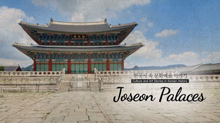 Joseon Palaces08:46
Joseon Palaces08:46 -
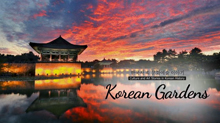 Korean Gardens08:34
Korean Gardens08:34 -
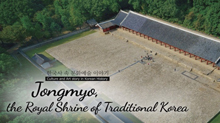 Jongmyo, the Royal Shrine of Traditional Korea09:05
Jongmyo, the Royal Shrine of Traditional Korea09:05 -
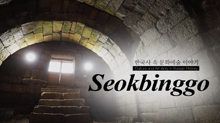 Seokbinggo, or Stone Ice Storage08:18
Seokbinggo, or Stone Ice Storage08:18 -
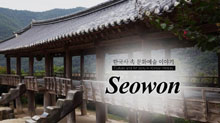 Seowon, a Neo-Confucian Academy08:22
Seowon, a Neo-Confucian Academy08:22 -
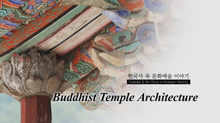 Buddhist Temple Architecture08:28
Buddhist Temple Architecture08:28 -
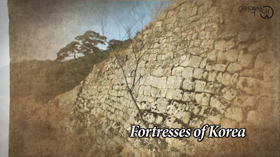 Fortresses of Korea09:12
Fortresses of Korea09:12 -
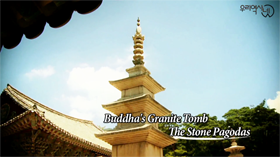 Stone Pagodas07:13
Stone Pagodas07:13 -
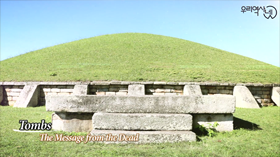 Tombs09:36
Tombs09:36 -
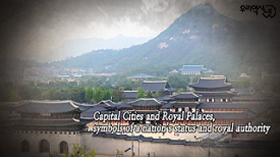 Capital Cities and Royal Palaces08:55
Capital Cities and Royal Palaces08:55 -
 Roof Tiles07:48
Roof Tiles07:48

